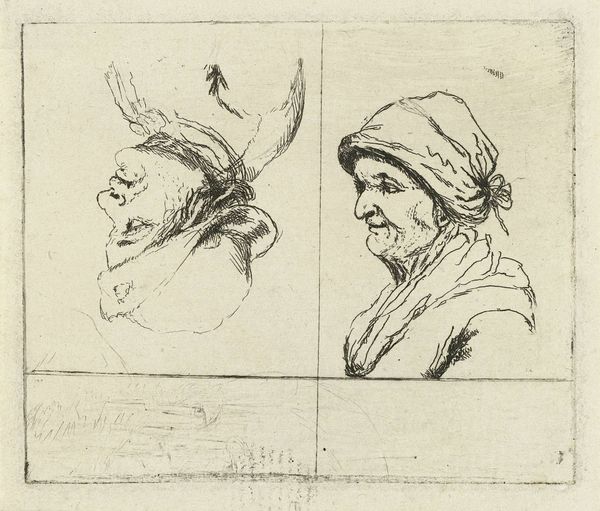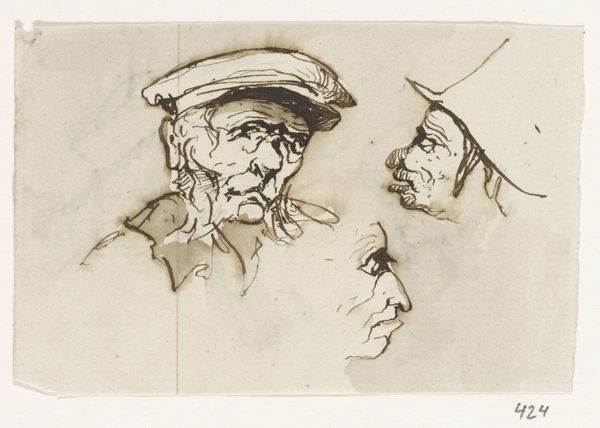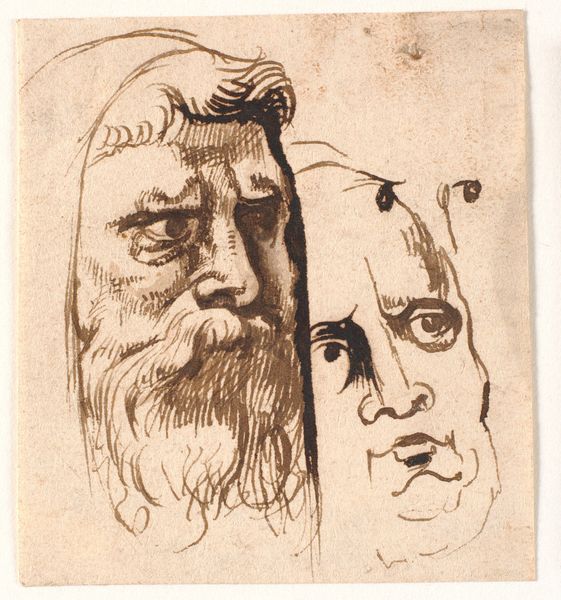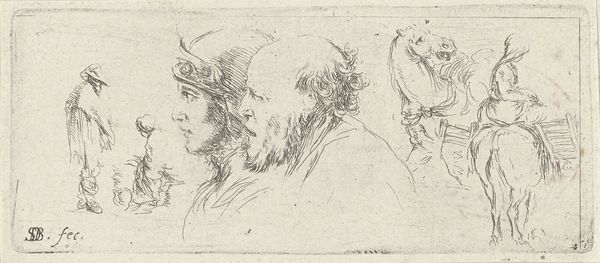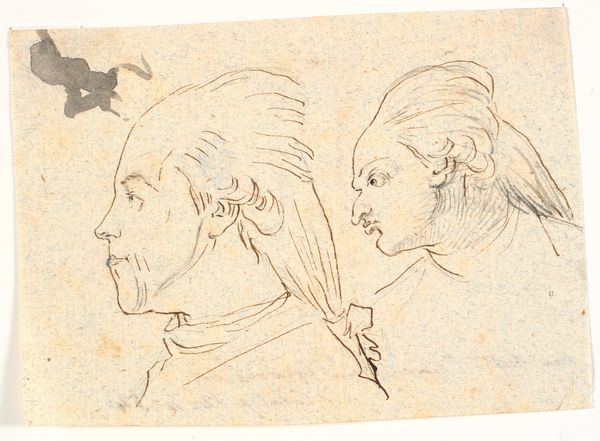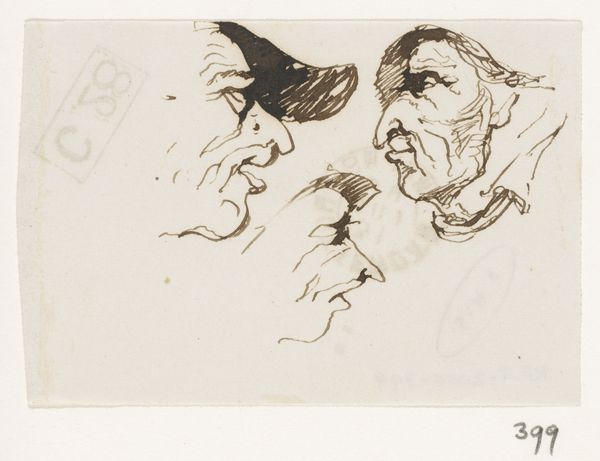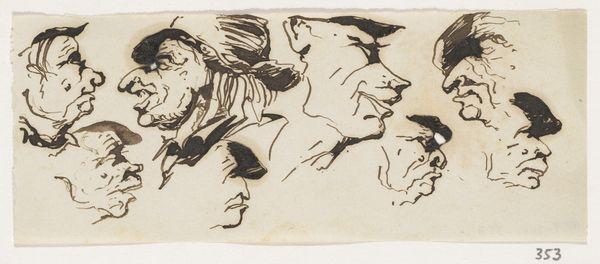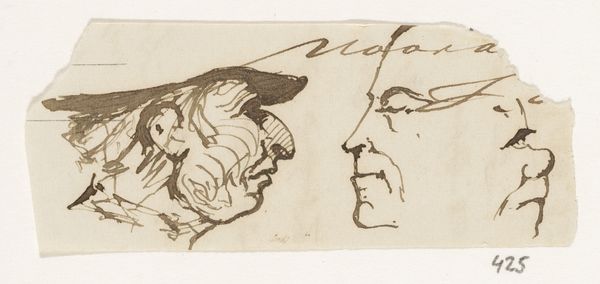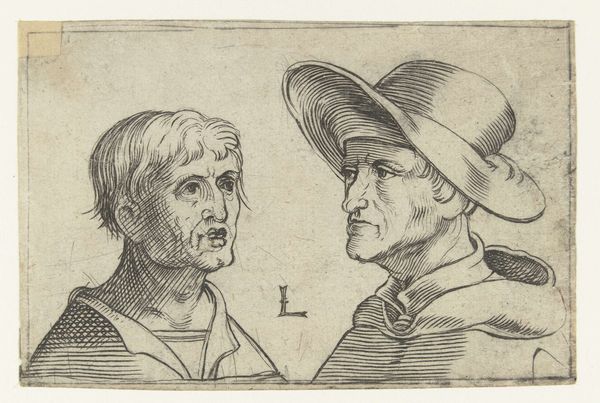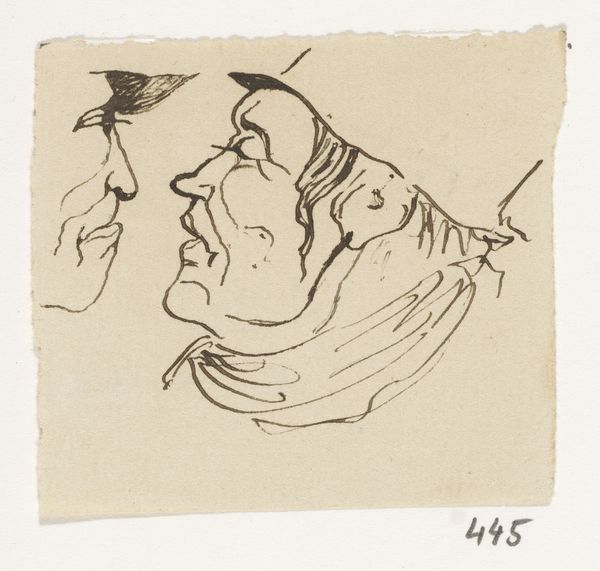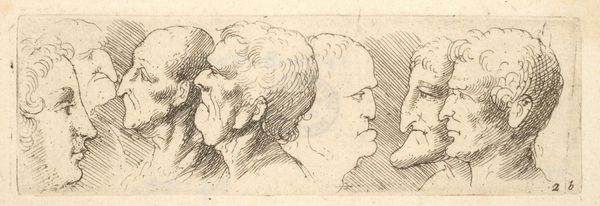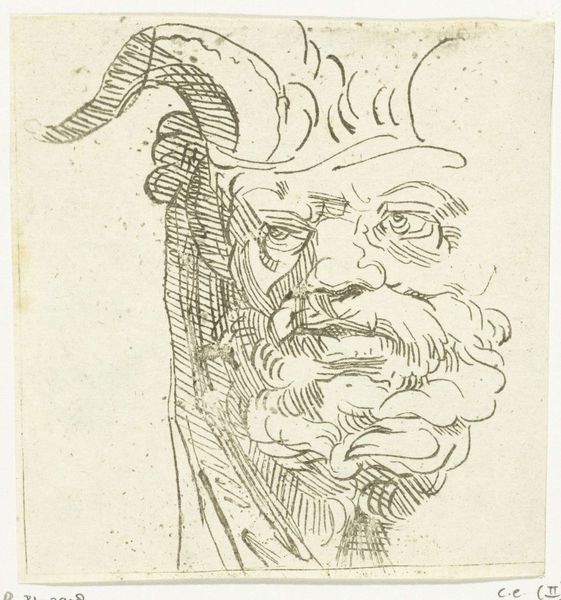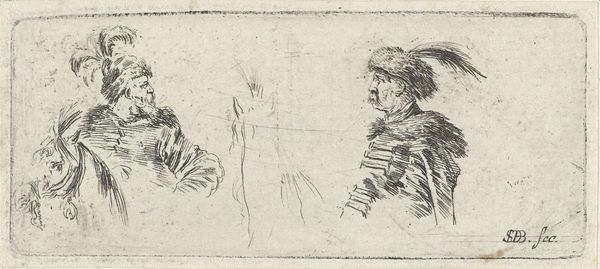
drawing, paper, ink
#
portrait
#
drawing
#
toned paper
#
paper
#
ink
#
sketchbook drawing
#
watercolour illustration
#
sketchbook art
Dimensions: height 102 mm, width 260 mm
Copyright: Rijks Museum: Open Domain
Curator: Before us is “Schetsen van koppen,” or “Sketches of Heads,” attributed to Richard Nicolaüs Roland Holst. These drawings in ink on paper, were created sometime between 1878 and 1938. It's part of the Rijksmuseum collection. Editor: The immediacy is striking. It feels intimate, like stumbling upon a private page from the artist's sketchbook. The toned paper and sparse lines create such a feeling of delicate vulnerability in the figures. Curator: Holst’s involvement in the Dutch Arts and Crafts movement during this time is interesting. His work aimed to promote ethical artistic practices in response to industrialized society. Does that influence how you see it? Editor: Absolutely. I see it as resistance against standardization, a deliberate reclaiming of the human element. Note how each head is distinct, conveying unique, unidealized character traits. It's a rejection of the manufactured and a celebration of the authentic self. Holst does a phenomenal job, here, emphasizing each figure's complex experience. Curator: Considering his socialist leanings and dedication to social causes through art, could these sketches be viewed as representations of the common person, perhaps elevated through his gaze? Editor: Precisely! These aren’t portraits of nobility, or idealized archetypes. They have the grit of lived experience etched into their faces. I immediately notice an emphasis on ageing. In these quick sketches, there are traces of a past life written upon the face. We're looking at the working class. Each line emphasizes social reality through facial expression, giving way to greater historical context. Curator: Do you find Holst's lack of precise dating typical of the time? Did the fluidity surrounding art creation play any role? Editor: Date ranges such as these were not rare, particularly with sketches, allowing insight into different periods of Holst's career as the world drastically changed. He saw art as more than just a product and tool that captures various political ideas throughout history. His choice of ordinary figures, then, suggests a democratic approach to portraiture. Curator: Thanks for the insightful look. Considering both formal elements and sociocultural contexts definitely enriched our understanding. Editor: A privilege. This shows the continuing influence of Holst, whose sketched social records create space for considering broader perspectives and contemporary debates surrounding identity representation.
Comments
No comments
Be the first to comment and join the conversation on the ultimate creative platform.
